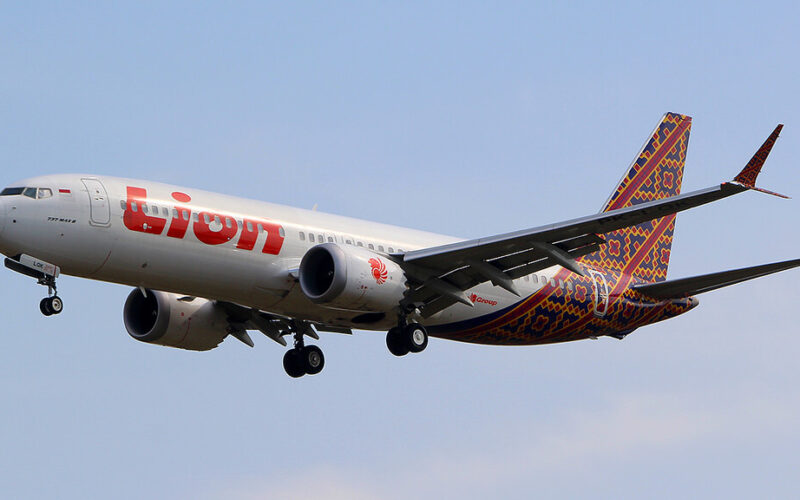After Lion Air flight JT610 downed in October 2018, it took searchers three days to find the first of two black boxes, drowned at the bottom of the sea. The second black box, on another hand, was found three months later ‒ in January 2019. By that time, the investigators had already released an initial report of the accident, which relies heavily on flight data captured by the FDR. Now, media reports indicate that CVR data is about to be published, giving a glimpse into the human side of the tragic events and raising serious questions about pilots’ awareness of systems on 737 MAX planes.
A three-month search
Lion Air Flight JT610 took off from the Jakarta on October 29, 2018. Some 13 minutes into the fight, contact with the airliner was lost, as months-old Boeing 737 MAX 8 crashed into the Java Sea, killing all 189 passengers and crew on board.
On November 1, 2018, divers found the first “black box”, a Flight Data Recorder (FDR), buried in debris on the floor of the sea.
At the end of the same month, on November 28, Indonesia’s National Transport Safety Committee (KNKT) issued the preliminary accident report, using the data that was available at the time.
The second black box, the CRV, was found on January 14, 2019, reportedly “broken into two pieces”.
Inside the cockpit
The preliminary report into Lion Air Flight JT610 crash, published by Indonesia’s National Transport Safety Committee (KNKT) on November 28, 2018, revolves around data recovered from the Flight Data Recorder (FDR). It draws attention to malfunction of Boeing’s new anti-stall system called Maneuvering Characteristics Augmentation System (MCAS), installed on MAX planes.
The flight data reveals that the aircraft’s systems had detected an imminent stall due to the faulty indicator, causing the “stick-shaker” (which vibrates the aircraft’s steering-wheel and warns the captain) to activate and remain so throughout most of the flight. To prevent a stall, the automated anti-stall system directed the aircraft’s nose down.
MCAS is activated when angle of attack (AOA) sensors indicate that the airframe is in a dangerously high angle and attempts to correct it by pushing the plane nose down. If the AOA signal is erroneous, the MCAS can cause an airplane to stall. In Lion Air’s case, investigators have indeed found a difference between left and right AoA readings, equal of about about 20°, according to FDR data.
The document reveals pilots had repeatedly reported to the Jakarta Air Traffic Control (ATC) the aircraft was experiencing “flight control problem” asking for the aircraft’s altitude as they struggled to steady the plane. Before losing contact, the flight crew had taken manual control to keep the aircraft’s nose up and were successful in counteracting the anti-stall system, but only for a brief time.
Before the final dive, the flight crew asked the controller to “block altitude 3,000 feet above and below” to avoid traffic. They could not determine their altitude due to all instruments showing different readings. The flight crew’s last words in response to controller’s request for an appropriate altitude, were “five thou”.
But now, data from the Cockpit Voice Recorder (CVR) indicates the pilots not only struggled to counteract the anti-stall system, but also “scoured a handbook” trying to understand what directed the aircraft’s nose down, Reuters reports, quoting three anonymous sources familiar with the CVR contents.
An eventful penultimate flight
What investigators really draw attention to in the report is the airspeed and altitude issues the very same aircraft (PK-LQP) experienced during its four previous flights, particularly the one that preceded the day of the crash.
Similarly to what occurred a day later, the Boeing 737 MAX 8 also ended up being automatically pitched nose down, but the flight crew shut down the MCAS (the anti-stall system) and continued the flight manually, landing “without incident”. That flight recorded “unreliable” airspeed and altitude disagreement warning, and the Aircraft Flight Maintenance Log later revealed a malfunction in the left primary flight display.
Now it appears that pilots of the penultimate flight have too struggled to control the aircraft. But there was a third person in the cockpit, deadheading pilot, who correctly identified the problem and advised crew on how to disable a malfunctioning flight-control system, Bloomberg reports quoting two sources familiar with the investigation.

